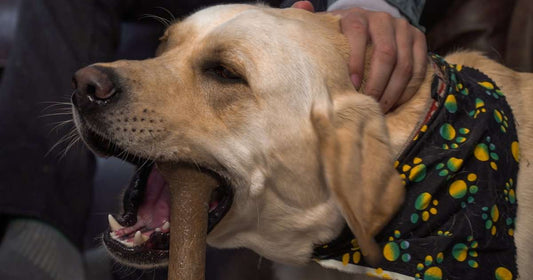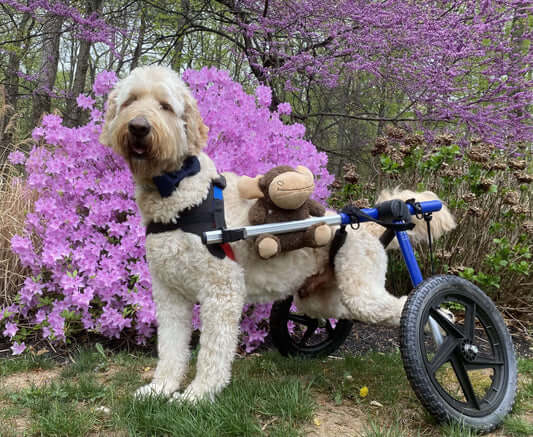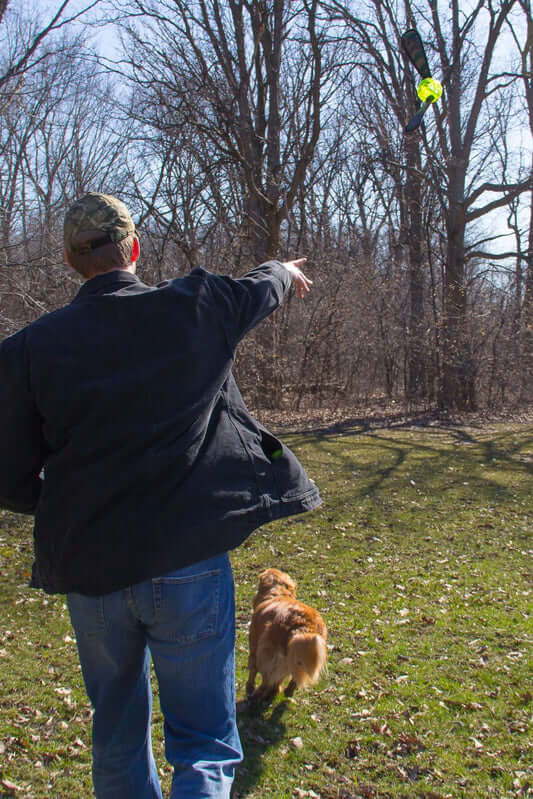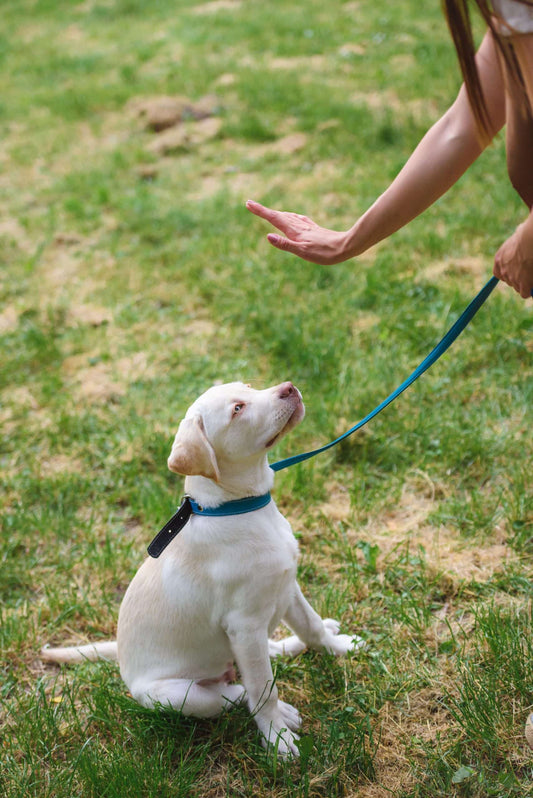Most of us get a dog toy for our favorite canine friend with the automatic hope for a game of fetch. For dogs like retrievers, a game of fetch may come quite naturally, however, not every dog has the interest or natural instinct to run after the toy and bring the toy back to you. Rescue dogs may not have had the opportunity to engage in human interaction and playing with toys as puppies. It can be frustrating, but a game of fetch can be learned by most dogs.
For starters, have an array of different types of toys available to see which type may spark his interest. Hero offers a wide selection of toys for many different interests. For dogs with little enthusiasm to pick up the object in his mouth, toys like Hero Treat ‘N Play are a perfect option as they have compartments that can hold a high-value treat, something with a keen meaty scent, like training treats, bacon bits, or frozen liquids like broths or soft food.
Step One
•Introduce the toy – sit on the ground with your dog facing you and show him the toy. When he leans in to investigate, verbally praise him, pet, or use a clicker, a sound object that you deploy upon his interest, then reward him a high-value treat.
•Praise and reward – every time your dog sparks an interest in sniffing the toy – praise/click and reward. When your dog is regularly mouthing the toy, start to build the duration of the trick by not providing immediate praise/reward; build up slowly by waiting for a second, then another second, and so on, before you praise and reward. Allow him to do the repetitions of short holds rather than expecting him to hold for a longer time.
Step Two
• After your dog has mastered the “hold,” start teaching fetch. This can be the tricky part (pun intended). Hold the toy in an outstretched palm and tell him to “hold.” If he takes the toy, praise, and reward. If he doesn’t, no worries, just keep practicing. It may take some dogs a bit longer to understand your commands.
• Once mastering the outstretch hand hold, place the toy in front of him and ask him to “hold.” When he picks it up, immediately praise and reward. When this is mastered, you can start to introduce your new verbal clue like “fetch” or “get it.”
• Slowly increase the distance away from you just a few inches at a time rather than tossing across the room or yard, which may be too much initially for his learning ability. Increase the distance slowly, and alternate asking him to get a toy close to you, then further away from you. Remember, alternate the type of toy you are asking him to hold and fetch so you gain an idea of the type of toy that sparks his attention (i.e. ball, rope, bone, plush toys).
• Continue to build on the distance slowly, and keep the reward a high-value, something he doesn’t ordinarily eat for meals.
Consistent practice and patience on your part until he’s learned the skill is the key. Be certain to teach him that the fetch is the behavior that gets rewarded with the treat.














